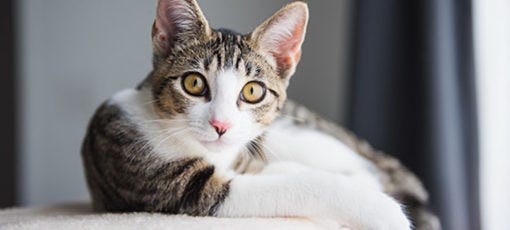
Indoor cats tend to live an average of three times longer than outdoor cats. In one study of cat mortality the most frequent causes were trauma 122 renal disorder.

The average lifespan of a cat is between 12 to 16.
How old can pet cats live. Veterinary care is also becoming more advanced and resulting in the ability to treat serious conditions and keep pets healthy much longer than in the past. The average age of domestic cats now is 12-15 years old if it is kept inside. In the 1980s the average life span of a domestic cat was only 7 years and in 1995 is was 9 years.
The average lifespan of a cat is between 12 to 16. Many indoor cats however reach beyond 20 years old. Much of the environment a feline lives in can decide how old a cat can get.
6How old do cats have to be to get declawed. Indoor domestic cats live on average up to the ripe old age of 17 years human years. This is a significantly longer lifespan than that of their wild outdoor counterparts.
How long is a cat year. Generally speaking the first two years of a cats life is considered to be the equivalent of 25 years. The average life expectancy of a domestic or domestic cat is estimated at about 13 years.
This age can even reach 20 years or more if the pet receives veterinary treatments good care and a good diet see why do cats sleep so much. In contrast the average life expectancy of a stray cat or creole is estimated at about 7 years. How Long Do Cats Live.
The average lifespan of a domesticated cat is 13 to 17 years. This is not an exact science as cats can live for 20 years. Others will succumb to illness or accidents earlier in life.
A cats life span is divided into six stages. Taking into account all of these variables the average lifespan of a cat is approximately 15 years with a majority of our cats living between 10 to 20 years. How Long Do Indoor Cats Live.
Your cats environment can affect how long your feline lives. Indoor cats tend to live an average of three times longer than outdoor cats. Indoor cats live on average between 9 15 years which in human terms is between 53 and 77 years of age.
It is estimated that 20 of cats in the USA are now living beyond 11 years of age. However some cats can live beyond that. Siamese cats in particular are known for their longevity and it is not uncommon for them to live into their 20s.
While cats can live healthy lives into their late teens and even early 20s there comes a time when your pet will begin to decline either due to old age or a progressive or terminal medical issue. Recognizing when the end is approaching for your beloved feline will help you make the most loving and compassionate choices for her and for yourself. Jochen WittmannEyeEmGetty Images.
A cats lifespan varies with lifestyle and genetics. With optimal health and good genes a well-nourished and well-exercised indoor-only cat will typically live longer than indoor-outdoor cats. According to the SPCA.
How Long Do Cats Live. Here Are Cat Breeds With The Longest Lifespan 1. This medium-sized pedigree tends to be happy playful and easygoing.
It has a sense of. This non-hairy breed exudes regal appearance. It has become a truism on the Internet that with access to current medical and dietary advancements the ideal cat can or may live to up to 20 cat years and older.
Based on a survey. Female cats typically outlive male cats. A common misconception in cat aging and dog aging.
Not data while the life expectancy of one living outdoors is 56 years. In one study of cat mortality the most frequent causes were trauma 122 renal disorder. Its easy to make a joke or play down this anxiety-provoking question but many cat owners want or need to know.
In all honesty theres no single answer. On average cats can live to 16 years old with some only passing away as early as 2 years old. Ive known some remarkable cats to make it to the grand old age of 23.
This is a question we are often asked and it is clear that an indoor life is more likely to leave you with more years to share with your cat. The average lifespan of an outdoor cat is only 2 -3 years which is such a lower amount than the 15-20 years we mentioned earlier.